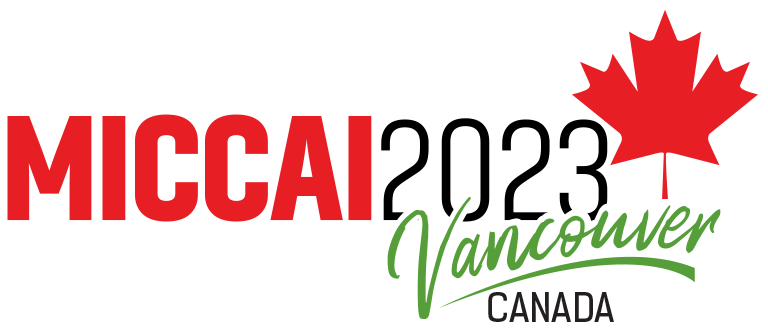
GRAIL 2023 is the fifth international workshop on GRaphs in biomedicAl Image anaLysis,
organised as a satellite event of MICCAI 2023 in Vancouver, Canada.
Graphs are powerful mathematical structures that provide a flexible and scalable framework
to model unstructured information, objects and their interactions in a readily interpretable
fashion. Graph theory provides a solid mathematical foundation for models and algorithms,
such as spectral analysis, dimensionality reduction, and network analysis. Since 2017,
geometric deep learning has married the field of graph signal processing with the flexibility
and rapid advancements of deep neural architectures. Since then, applications of graph neural
networks (GNNs) in medicine have been steadily increasing, ranging from medical imaging and
shape understanding, brain connectomics, population models and patient multi-omics to
discovery and design of novel drugs and therapeutics. In the leading computer vision and
ML conferences (CVPR, ICLR, NeurIPS), GNNs have been among the hottest topics in 2022 and
will likely increase in interest in 2023. With this workshop, we aim to provide a platform
for understanding and application of graph-based models as versatile and powerful tools in
biomedical image analysis and beyond. Our goal is to bring together scientists that develop
graph-based models, and encourage their application to difficult clinical problems within
a variety of biomedical data contexts. GRAIL 2022 featured keynote presentations from
leading researchers in the graph community, and paper submissions on a wide range of
topics, from brain connectomics and whole-slide image analytics, over semantic priors from
biomedical knowledge graphs, explainable AI approaches for GNNs, to GNN-based genome
alignment and their incorporation into multi-omics patient representations. For 2023, we
expect a similarly exciting lineup of keynotes and paper submission. As an additional
highlight, we will invite a tutorial-style keynote for hands-on demonstration of acceleration
recipes in graph analytics and GNN frameworks like Deep Graph Library (DGL) or
Pytorch-Geometric (PyG).
In more detail, the scope of methodology topics includes but is not limited to:
- Deep/machine learning on graphs with regular and irregular structures
- Probabilistic graphical models for biomedical data analysis
- Signal processing on graphs for biomedical image analysis, including non-learning based
approaches
- Explainable AI (XAI) methods in geometric deep learning
- Big data analysis with graphs
- Graphs for small data sets
- Semantic graph research in medicine: Scene graphs and knowledge graphs
- Modeling and applications of graph symmetry and equivariance
- Graph generative models
- Combination of graphs with other SOTA domains (e.g. self-supervised learning, federated
learning)
Applications covered include but are not limited to:
Image segmentation, registration, classification
Graph representations in pathology imaging and whole-slide image analysis
Graph-based approaches in intra-operative surgical support
Graph-based shape modeling and dimensionality reduction
Graphs for large scale patient population analyses
Combining multimodal/multi-omics data through graph structures
Graph analysis of brain networks and connectomics





